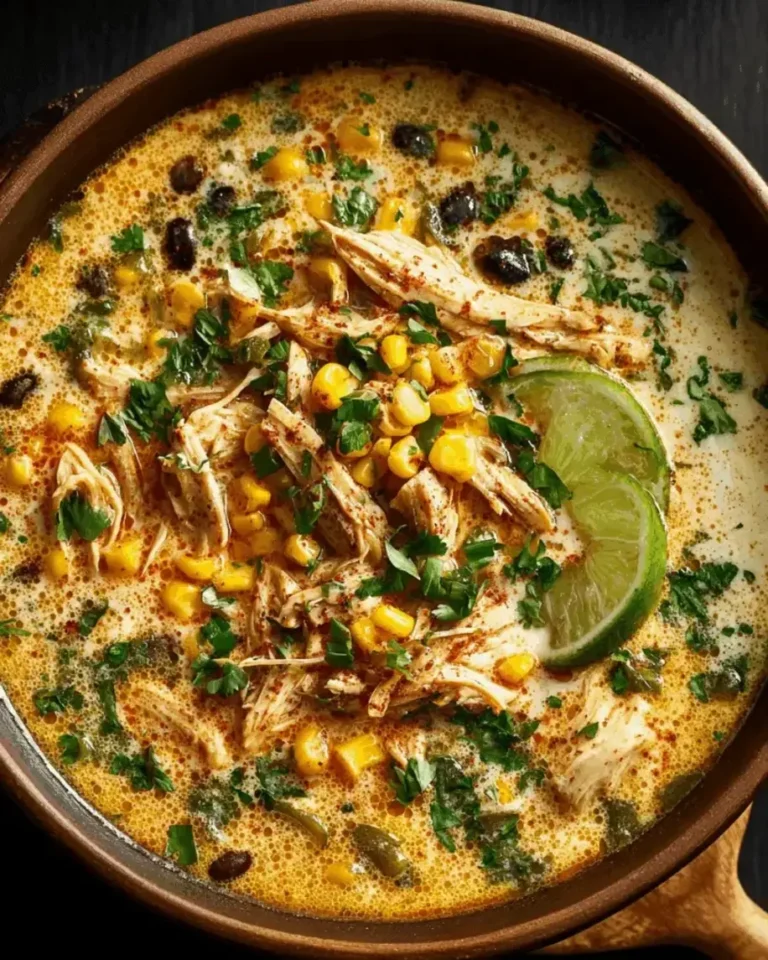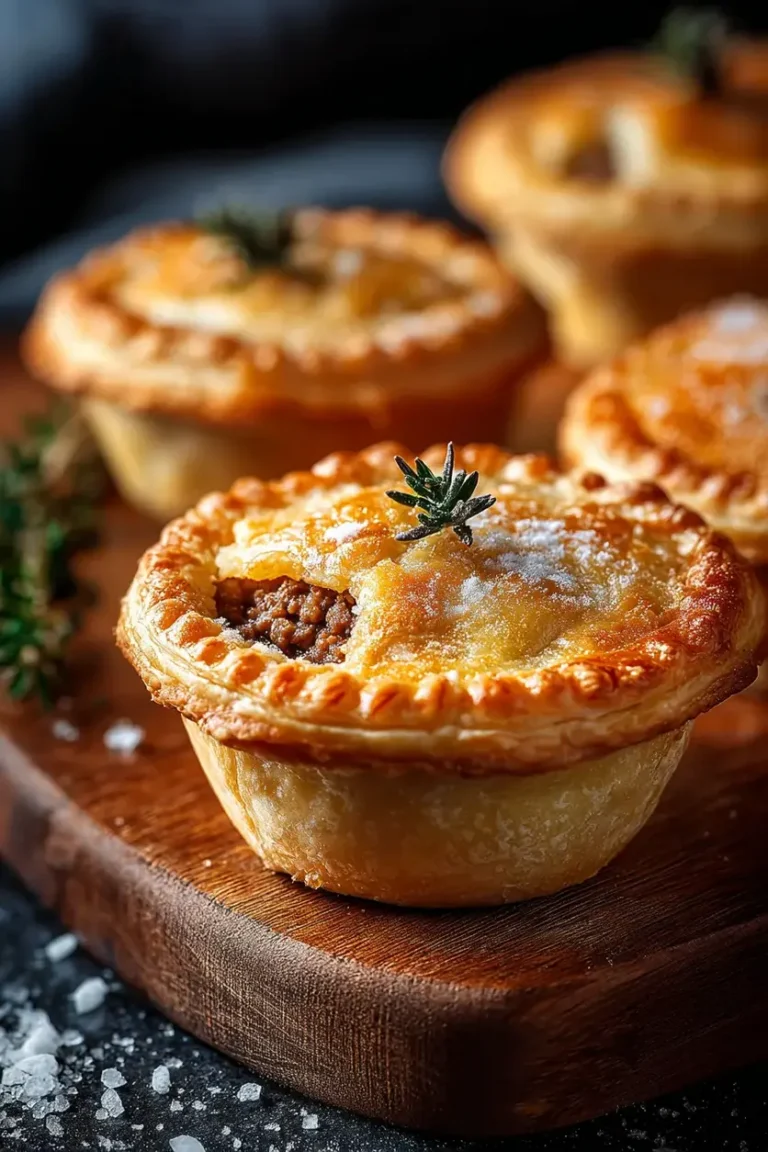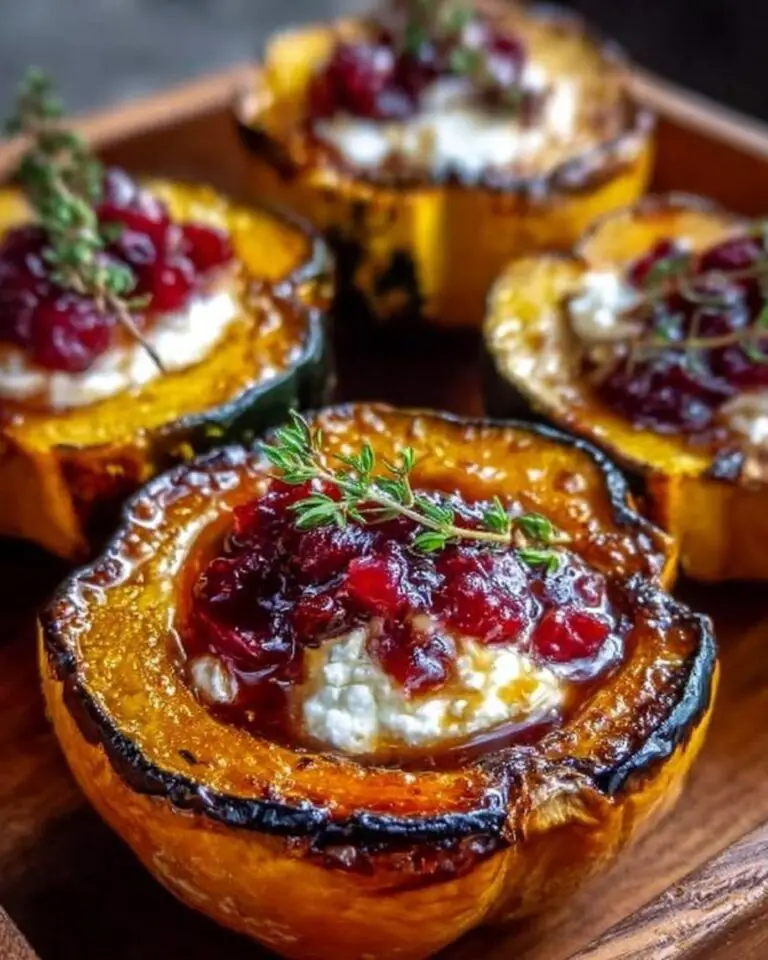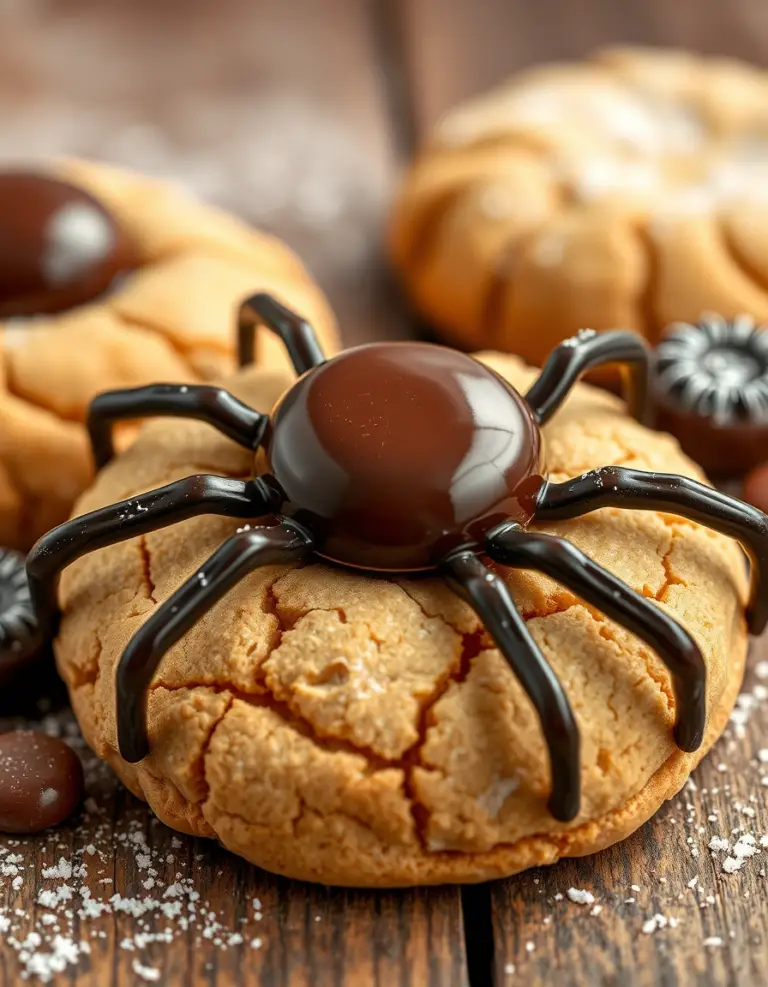Best Huli Huli Chicken Recipe – Easy Baked Hawaiian Favorite
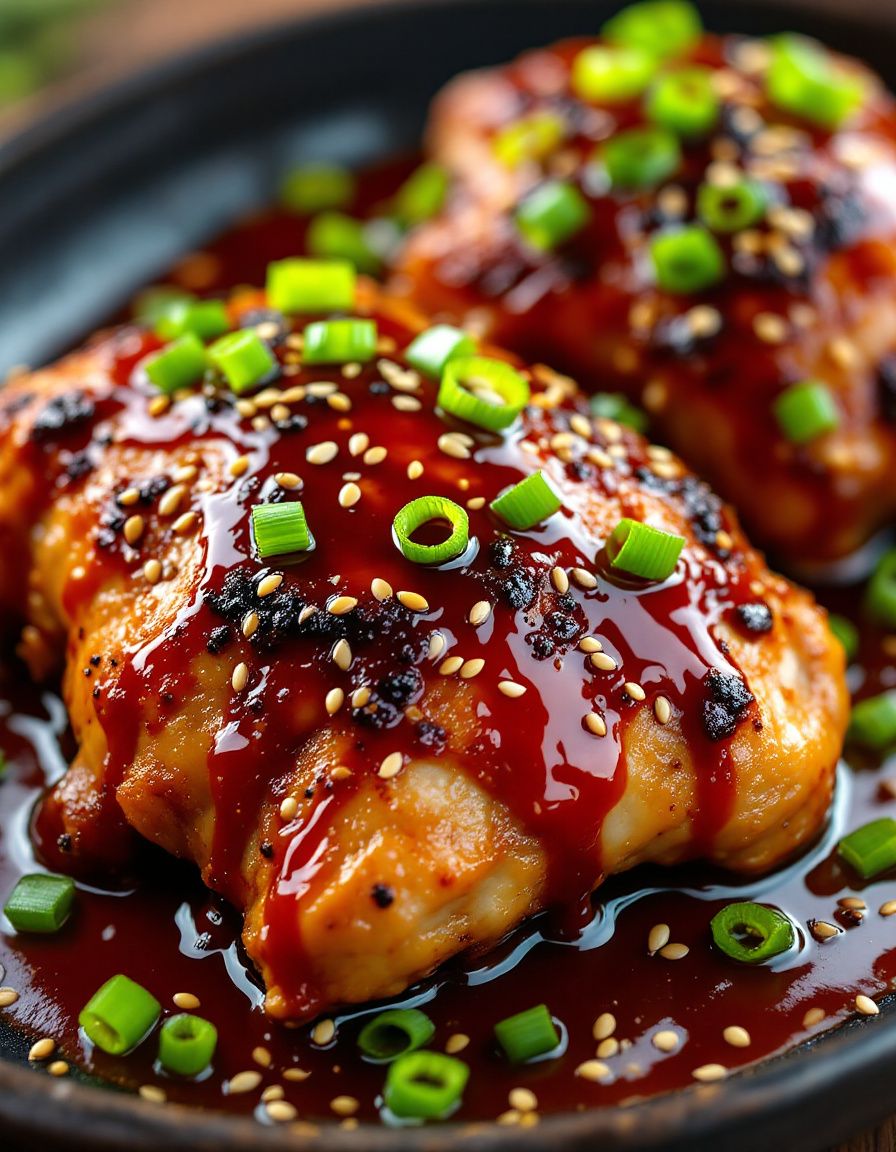
Huli Huli Chicken Recipe – A Baked Hawaiian Delight!
Indulge your taste buds with the tantalizing flavors of Huli Huli Chicken, a beloved Hawaiian dish that combines the delightful sweetness of pineapple with savory, smoky notes. This baked version captures the essence of traditional grilling methods while ensuring everyone can enjoy this dish from the comfort of their home kitchen. Picture succulent chicken that is marinated to perfection, baked to juicy tenderness, and coated with a rich, glossy sauce that beckons you to take just one more bite.
Huli Huli Chicken is not just a meal; it’s a celebration of flavor and culture. Originating in Hawaii, this dish embodies the spirit of island life, where fresh ingredients and vibrant tastes create memories around family gatherings and festive occasions. As you bake this chicken, the aroma wafting through your kitchen will transport you to a sunny beach, making it a perfect meal to enjoy any day of the year.
Quick Recipe Highlights
- Flavor Profile: The dish boasts a harmonious blend of sweet, savory, and slightly tangy flavors, thanks to the rich marinade.
- Texture: Each bite offers a tender, juicy chicken with a delightful caramelized exterior.
- Aroma: Enjoy the enticing fragrance of garlic, soy sauce, and pineapple blending beautifully as the chicken bakes.
- Visual Appeal: The vibrant golden color of the baked chicken, accented by pineapple slices, makes for a stunning presentation.
- Skill Level Needed: This recipe is beginner-friendly, making it easy for anyone to create a delicious Hawaiian feast.
- Special Equipment: A baking dish, mixing bowl, and a whisk are the only tools needed for this straightforward recipe.
Recipe Overview
- Difficulty Level: The Huli Huli Chicken recipe is easy to follow and perfect for novice cooks looking to expand their culinary skills.
- Category: This dish is ideal for main courses and can be served alongside sides like rice or salad.
- Cuisine: Huli Huli Chicken is a staple of Hawaiian cuisine, showcasing the islands’ love of bold, sweet flavors.
- Cost: With affordable ingredients like chicken, soy sauce, and pineapple, this dish is budget-friendly for families or gatherings.
- Season: Ideal for summer barbecues but delightful any time of year, particularly during tropical-themed parties.
- Occasion: Perfect for festive celebrations, luau parties, or an ordinary family dinner that feels special.
Why You’ll Love This Recipe
Get ready to experience the perfect balance of taste and texture with Huli Huli Chicken. The sweet, smoky glaze elevates each bite, ensuring what you serve will be a hit. This dish is not just a delight; it’s also incredibly convenient to prepare. With a short marinating time, you can have a homemade meal on the table quicker than you might think.
Nutritionally, this recipe offers wholesome chicken paired with fresh ingredients, making it a smart choice for both taste and health. The use of pineapple not only adds sweetness but also provides vitamins and minerals, enhancing the meal’s overall nutritious profile. Whether served at a casual dinner or a grand celebration, Huli Huli Chicken brings loved ones together, creating shared experiences and lasting memories.
Moreover, you’ll appreciate the cost-effectiveness of this recipe. Simple and straightforward ingredients mean you can enjoy a taste of Hawaii without breaking the bank. Plus, the accessibility of ingredients makes it easy for anyone to whip up this dish at home. Trust me; your family will be asking for seconds, leading to joyful moments around the dining table.
Historical Background and Cultural Significance
Huli Huli Chicken has roots in Hawaiian culture, dating back to the mid-20th century. This dish, often prepared at luaus and gatherings, reveals a history intertwined with the islands’ agricultural abundance and fishing tradition, celebrated in both local recipes and festive occasions. Its name, translating to “turn-turn,” refers to the traditional grilling process, where the chicken must be flipped to achieve that perfect caramelization.
Culturally, this dish signifies gatherings and celebrations. It embodies the spirit of aloha, reflecting the warmth and hospitality of Hawaiian communities. As Huli Huli Chicken evolved, different families added their personal touches, leading to regional variations that highlight individual tastes and preferences, making it a cherished dish throughout Hawaii.
Over the years, this dish has adapted to modern culinary trends, moving to homes and restaurants worldwide. Now, it reflects varying interpretations that maintain cultural significance while appealing to global palates. Each adaptation tells a story of connection to Hawaiian roots while encouraging creativity in the kitchen.
Regional variations of Huli Huli Chicken showcase how versatile the dish is, with each iteration offering a unique twist on the traditional flavors. Some recipes incorporate ingredients like ginger or other tropical fruits that reflect the rich bounty of the islands, allowing cooking enthusiasts to explore and enjoy the sweet and savory notes that define this beloved dish.
Ingredient Deep Dive
Chicken
The star of Huli Huli Chicken is, understandably, the chicken itself. Historically, this protein is a staple in Hawaiian diets. Chicken is not only versatile but also a lean source of protein, contributing to muscle growth and repair. When selecting chicken for this recipe, look for bone-in, skin-on options for added flavor and moisture during cooking. Proper storage involves keeping chicken refrigerated and using it within a couple of days for peak freshness. If you prefer, skinless chicken breasts can be used as a leaner alternative, but they may require extra careful cooking to prevent dryness.
Pineapple
The inclusion of pineapple not only enhances the flavor but also pays homage to Hawaiian agriculture. Pineapples are famous for their juicy sweetness and the unique bromelain enzyme, known for its digestive benefits. When selecting pineapples, opt for those with a sweet aroma and golden color, indicating ripeness. Store whole pineapples at room temperature, but once cut, keep the pieces refrigerated and consume them within a few days. If fresh pineapple is unavailable, you can use canned pineapple, but select varieties without added sugar for a healthier option.
Common Mistakes to Avoid
- Skipping the marination: Allowing the chicken to marinate is crucial for infusing flavor; don’t rush this step.
- Using dried herbs instead of fresh: Fresh ingredients offer better flavor and aroma compared to dried ones.
- Baking without covering: Leaving chicken uncovered can lead to drying out; cover it for juiciness.
- Cooking at the wrong temperature: Ensure your oven is preheated to achieve the best texture and color.
- Not allowing chicken to rest: Letting the chicken rest post-cooking is essential for retaining moisture.
- Skipping the basting: Basting during baking adds moisture and flavor, so don’t skip this step.
- Overcrowding the baking dish: Leave enough space between chicken pieces for even cooking.
- Not checking doneness: Always use a meat thermometer to ensure chicken reaches the safe internal temperature of 165°F.
- Focusing too much on presentation: While plating is important, taste should always take priority.
- Neglecting to taste the marinade: Adjust seasoning in the marinade before adding chicken to ensure flavor excellence.
Essential Techniques
Mastering the art of marinating is key for flavor infusion. Properly marinate your chicken for at least 30 minutes to an hour. This step allows the proteins in the chicken to break down, enhancing tenderness. Remember to taste test the marinade before adding the chicken to adjust flavors to your preference.
Baking the chicken at a consistent temperature ensures even cooking. A preheated oven allows for proper caramelization and browning. Regularly check your chicken’s internal temperature to avoid overcooking and preserve juiciness.
Pro Tips for Perfect Huli Huli Chicken
1. Choose high-quality chicken for optimal flavor and texture – it makes a noticeable difference.
2. Don’t skip the marinating stage; marinating for longer enhances flavors.
3. Consider preparing extra marinade for drizzling later; it elevates the dish.
4. Use a meat thermometer to avoid guessing doneness, ensuring perfect results.
5. For a lovely glaze, broil the chicken for the last few minutes of baking.
6. Pair with a fresh pineapple salsa for a refreshing contrast to the savory chicken.
7. Prepare more marinade and reserve some before adding chicken to use as a dip.
8. Let the chicken rest after baking to allow juices to redistribute for maximum tenderness.
Variations and Adaptations
Huli Huli Chicken can easily be adapted to reflect regional variations. For a sweet twist, consider adding mango or papaya to the marinade. Seasonal adaptations could include using peaches during summer or apples in the fall, maintaining the sweet element while embracing seasonal produce.
For dietary needs, opt for skinless chicken to reduce fat or use tofu for a vegetarian adaptation while keeping the marinade identical. To explore flavor variations, try adding spices like chili powder or curry for an exciting kick. For those who love crunch, consider grilling the chicken instead for a smoky texture variation. Presentation alternatives such as serving on a bed of greens or in tacos can impress your guests and diversify your serving style.
Serving and Presentation Guide
Plating your Huli Huli Chicken beautifully can enhance the dining experience. Consider serving on a large platter, garnished with fresh herbs and pineapple slices for added color contrast. A drizzle of the reserved marinade over the top adds polish to the presentation. When garnishing, include vibrant green cilantro or green onions to create visual appeal.
Pair the dish with traditional sides like coconut rice or a colorful vegetable stir-fry. This combination adds depth to the meal, balancing flavors and textures. Remember, serving the chicken at optimal temperature can enhance the eating experience, so aim for warm dishes. Ensure adequate portion sizes based on guests’ appetites, offering a generous serving that invites seconds.
Wine and Beverage Pairing
To complement the vibrant flavors of Huli Huli Chicken, opt for white wines like Sauvignon Blanc or Pinot Grigio. These wines enhance the tropical notes and cut through the richness of the dish. For a sweet touch, consider pairing with a Riesling, which will balance the flavors beautifully.
Non-alcoholic alternatives can include tropical juices such as pineapple or mango, served over ice to amplify the Hawaiian essence of the meal. If you prefer a warm beverage, a lightly brewed herbal tea can provide soothing undertones. Serve beverages chilled or at a cool temperature to enhance the overall refreshment against the savory chicken.
Storage and Shelf Life
To preserve the freshness of your Huli Huli Chicken, store leftovers in an airtight container in the refrigerator. Properly stored, it will maintain freshness for up to 3 days. If you prefer longer storage, freezing the chicken is an excellent option. Pack the cooled chicken in freezer-safe bags, removing as much air as possible to prevent freezer burn.
When reheating, do so in the oven to ensure even warmth and optimal texture restoration. Always check for any signs of spoilage before consuming leftovers, such as an off smell or change in color. When in doubt, it’s best to err on the side of caution and dispose of the chicken.
Make Ahead Strategies
Huli Huli Chicken is perfect for meal prepping. Marinate the chicken the night before to save time and maximize flavor. Simply store in the refrigerator overnight in an airtight container, which helps blend the flavors seamlessly.
If you prefer to cook in bulk, you can bake a larger batch and portion out for the week’s meals. This approach allows variety; pair the chicken with different sides each day for a fresh experience. When reheating, keep an eye on doneness to avoid drying out the chicken, and consider reintroducing some marinade for added moisture.
Scaling Instructions
If you need to adjust the recipe for larger gatherings, scaling up is easy. Doubling or tripling the ingredients works well; just ensure you have a large enough baking dish or consider baking in batches. For smaller family dinners, halving the recipe is also feasible, but maintain the marinating time according to the amount of chicken used for full flavor infusion.
Equipment adjustments may be necessary; use larger or multiple baking sheets to accommodate extra amounts. Cooking times might require small modifications; keep a close watch on internal temperature when scaling to avoid over or undercooking.
Nutritional Deep Dive
A serving of Huli Huli Chicken provides a well-rounded nutritional profile, emphasizing protein for muscle maintenance. Depending on the choice of sides, the carbohydrate content may vary, allowing you to adjust your meal based on dietary needs.
The use of pineapple not only adds flavor but also brings in beneficial vitamins and antioxidants. Each ingredient contributes to the balance of essential macros and micros, making it a hearty yet non-complicated meal choice. Portion management can be beneficial, especially if you are balancing dietary goals, facilitating healthy eating without deprivation.
Bringing the recipe into a weight management perspective emphasizes sticking to appropriate portion sizes while enjoying nutrient-dense ingredients, leading to satisfaction and fullness.
Dietary Adaptations
Huli Huli Chicken’s flexible nature allows for numerous dietary adaptations. For gluten-free needs, ensure that your soy sauce is labeled gluten-free or use tamari as a substitute. For a dairy-free version, this recipe is inherently suitable, as it contains no dairy products.
Vegan adaptations can feature marinated jackfruit or tofu, absorbing flavors beautifully when cooked similarly to chicken. If following a low-carb or keto diet, prioritize the use of low-sugar marinades. Additionally, for those on a Paleo diet, opting for fresh ingredients and avoiding processed sauces guarantees a recipe aligned with lifestyle goals.
Troubleshooting Guide
In preparing Huli Huli Chicken, you may encounter some challenges. For texture issues, like dryness, ensure proper marination and cooking time. Utilizing a meat thermometer promotes consistent doneness, preventing overcooking.
Balancing flavors is vital; adjust sweetness in the marinade with a hint of salt if it’s too sweet. On temperature problems, if the chicken browns too quickly, consider covering it loosely with foil to slow down cooking while ensuring thorough heating.
When adapting ingredients, be mindful of timing, as some substitutes may cook differently. Lastly, when cooking in bulk, ensure proper uniformity in size to achieve even cooking throughout.
Recipe Success Stories
Many home cooks have enjoyed the delicious flavors of Huli Huli Chicken and embraced its simplicity. Community feedback highlights how approachable the recipe is for families looking to try something new while sticking close to their roots.
Adaptation stories reveal the joy of turning traditional recipes into modern twists, like adding fiery chili flakes for some spice or incorporating different proteins for dietary needs. Readers have shared their recipe variations, including tropical fruit salsas that add vibrant pops of flavor and color to the dish.
Photo submissions from the community showcase beautifully plated Huli Huli Chicken that tells a story of shared family experiences, demonstrating how this dish fosters creativity and enjoyment in the kitchen.
Frequently Asked Questions
Yes, boneless chicken can be used. However, keep in mind that bone-in chicken often retains moisture better during cooking. Adjust cooking times as needed since boneless meat usually cooks faster.
2. How long should I marinate the chicken?
A minimum of 30 minutes is recommended, but for more profound flavor, marinate the chicken for several hours or even overnight in the refrigerator.
3. Can I use an outdoor grill instead of an oven?
Absolutely! Grilling Huli Huli Chicken adds a beautiful smoky flavor. Just ensure to turn the chicken regularly to allow even cooking.
4. What side dishes pair well with this recipe?
Typical pairings include coconut rice, fresh salad, or grill vegetables. You can also serve it with zesty coleslaw to enhance the meal’s flavor profile.
5. Can I make the marinade ahead of time?
Yes! You can prepare the marinade ahead and store it in the fridge for up to 2 days. Just mix with the chicken when ready to cook.
6. What’s the best internal temperature for cooked chicken?
The safe internal temperature for cooked chicken is 165°F. Always check with a meat thermometer for accuracy.
7. How can I store leftovers?
Leftovers should be stored in an airtight container in the fridge for up to 3 days. For longer storage, consider freezing it.
8. Can I substitute chicken with other proteins?
Yes! You can use tofu, tempeh, or jackfruit as alternatives for a vegetarian version of Huli Huli Chicken.
9. Is there a vegan alternative to this recipe?
Yes, by using plant-based proteins such as tofu, marinated appropriately, you can create a satisfying vegan version that retains the dish’s essence.
10. How do I reheat leftover Huli Huli Chicken?
The best method is to reheat in the oven at low temperature until heated through. This helps maintain tenderness compared to microwaving.
Additional Resources
If you love Huli Huli Chicken, you might also enjoy exploring related recipes featuring Hawaiian cuisine, such as Loco Moco or Spam Musubi. Technique guides on marinating and grilling can enhance your cooking repertoire. Further, learning about unique ingredients like Hawaiian sea salt or macadamia nuts can help you experiment more in the kitchen.
For equipment recommendations, consider investing in quality baking pans and a meat thermometer that will aid greatly in cooking various proteins perfectly. Don’t hesitate to explore seasonal variations to incorporate fresh produce or incorporate flavors appropriate to different holiday meals.
Join the Conversation
We invite you to share your Huli Huli Chicken experiences on social media! Post your photos, tag us, and tell us about your adaptations to this delightful dish. Engaging with others who love cooking offers inspiration, tips, and new ideas to try in your kitchen. Share reviews and critiques to help fellow cooks perfect their skills, creating a supportive community that celebrates creativity and culinary adventures.
The Recipe
Huli Huli Chicken
Serves: 4
Prep Time: 15 mins
Cook Time: 45 mins
Total Time: 60 mins
Kitchen Equipment Needed
- Baking dish
- Mixing bowl
- Whisk
- Meat thermometer
Ingredients
- 4 bone-in, skin-on chicken thighs
- 1 cup pineapple juice
- 1/4 cup soy sauce
- 1/4 cup brown sugar
- 3 cloves garlic, minced
- 1 tablespoon grated fresh ginger
- 1 tablespoon sesame oil
- 1/4 teaspoon black pepper
- 1/2 pineapple, sliced (for garnish)
- Chopped green onions (for garnish)
Directions
- In a mixing bowl, whisk together pineapple juice, soy sauce, brown sugar, garlic, ginger, sesame oil, and black pepper.
- Place the chicken in a large resealable plastic bag and pour the marinade over the chicken. Seal and refrigerate for at least 30 minutes, or up to overnight.
- Preheat your oven to 375°F (190°C).
- Transfer the chicken to a baking dish and pour any leftover marinade over the top.
- Bake for 30 minutes, then flip the chicken and bake for another 15 minutes, basting occasionally.
- For a caramelized finish, broil for an additional 3-5 minutes until the chicken is golden brown.
- Let it rest for 5 minutes before serving. Garnish with pineapple slices and green onions.
Recipe Notes
- For a spicier version, add a teaspoon of red chili flakes to the marinade.
- Feel free to substitute chicken thighs with chicken breasts or drumsticks, adjusting cooking time accordingly.
- If you prepare a larger batch, leftover chicken is excellent on salads or sandwiches.

